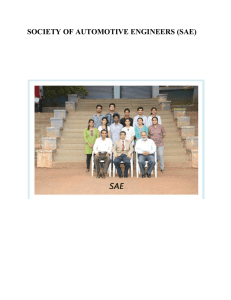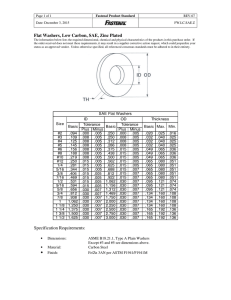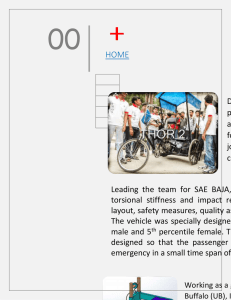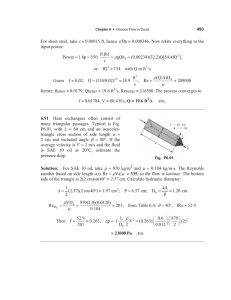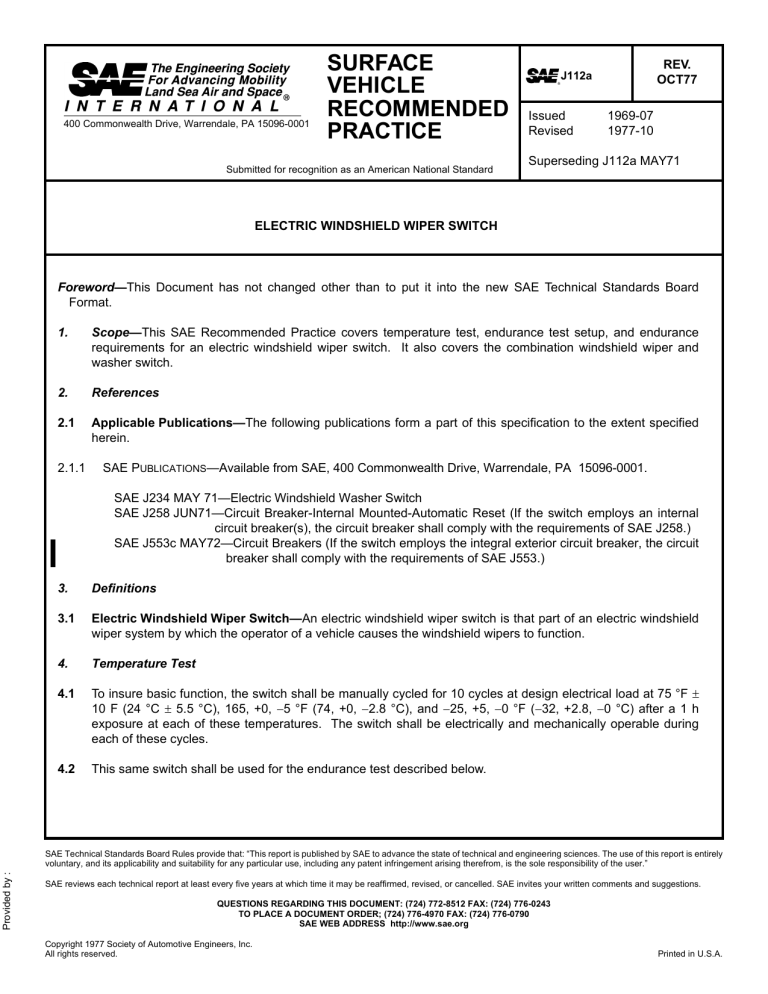
400 Commonwealth Drive, Warrendale, PA 15096-0001 SURFACE VEHICLE RECOMMENDED PRACTICE Submitted for recognition as an American National Standard REV. OCT77 J112a Issued Revised 1969-07 1977-10 Superseding J112a MAY71 ELECTRIC WINDSHIELD WIPER SWITCH Foreword—This Document has not changed other than to put it into the new SAE Technical Standards Board Format. 1. Scope—This SAE Recommended Practice covers temperature test, endurance test setup, and endurance requirements for an electric windshield wiper switch. It also covers the combination windshield wiper and washer switch. 2. References 2.1 Applicable Publications—The following publications form a part of this specification to the extent specified herein. 2.1.1 SAE PUBLICATIONS—Available from SAE, 400 Commonwealth Drive, Warrendale, PA 15096-0001. SAE J234 MAY 71—Electric Windshield Washer Switch SAE J258 JUN71—Circuit Breaker-Internal Mounted-Automatic Reset (If the switch employs an internal circuit breaker(s), the circuit breaker shall comply with the requirements of SAE J258.) SAE J553c MAY72—Circuit Breakers (If the switch employs the integral exterior circuit breaker, the circuit breaker shall comply with the requirements of SAE J553.) 3. Definitions 3.1 Electric Windshield Wiper Switch—An electric windshield wiper switch is that part of an electric windshield wiper system by which the operator of a vehicle causes the windshield wipers to function. 4. Temperature Test 4.1 To insure basic function, the switch shall be manually cycled for 10 cycles at design electrical load at 75 °F ± 10 F (24 °C ± 5.5 °C), 165, +0, −5 °F (74, +0, −2.8 °C), and −25, +5, −0 °F (−32, +2.8, −0 °C) after a 1 h exposure at each of these temperatures. The switch shall be electrically and mechanically operable during each of these cycles. 4.2 This same switch shall be used for the endurance test described below. Provided by : SAE Technical Standards Board Rules provide that: “This report is published by SAE to advance the state of technical and engineering sciences. The use of this report is entirely voluntary, and its applicability and suitability for any particular use, including any patent infringement arising therefrom, is the sole responsibility of the user.” SAE reviews each technical report at least every five years at which time it may be reaffirmed, revised, or cancelled. SAE invites your written comments and suggestions. QUESTIONS REGARDING THIS DOCUMENT: (724) 772-8512 FAX: (724) 776-0243 TO PLACE A DOCUMENT ORDER; (724) 776-4970 FAX: (724) 776-0790 SAE WEB ADDRESS http://www.sae.org Copyright 1977 Society of Automotive Engineers, Inc. All rights reserved. Printed in U.S.A. SAE J112a Revised OCT77 5. Endurance Test Setup 5.1 The switch shall be set up to operate its design electrical load. 5.2 The test shall be set up to operate the switch for the prescribed number of completed cycles. One complete cycle shall consist of sequencing through each position (with dwell in each position) and return without dwell in intermediate positions to the initial position. The test equipment shall be so arranged as to provide the following mechanical time requirements: Travel Time—0.1–0.5 s (time from one position to the next). NOTE—If the switch employs a rheostat, the travel time through the rheostat segment in each direction shall be 1.0-3.0 s. Dwell Time—0.50–1.0 s (time in each position). NOTE—After switching to OFF, if a motor is used, sufficient dwell time shall be provided to allow the motor to park. The dwell time in OFF can then be greater (if required) than the dwell time range indicated above. 5.3 During the test the switch shall be operated at 6.4 V d-c for a 6 V system, 12.8 V d-c for a 12 V system, or 25.6 V d-c for a 24 V system. These voltages shall be measured at the input termination on the switch. The power supply shall not generate any adverse transients not present in motor vehicles and shall comply with the following specifications: a. Output Current—Capable of supplying the continuous current of the design electrical load. b. Regulation Dynamic—The output voltage at the supply shall not deviate more than 1.0 V from zero to maximum load (including inrush current) and should recover 63% of its maximum excursion within 100 ms. Static—The output voltage at the supply shall not deviate more than 2% with changes in static load from zero to maximum (not including inrush current), and means shall be provided to compensate for static input line voltage variations. c. Ripple Voltage-Maximum 300 mV peak to peak. Endurance Requirements 6.1 The switch shall be capable of satisfactorily operating for 10,000 complete cycles at a temperature of 75 °F ± 10 °F (24 °C ± 5.5 °C) followed by 1 h ON in low position at 75 °F ± 10 °F (24 °C ± 5.5 °C). 6.2 The average voltage drop from the input terminal(s) to the corresponding average output terminal(s) shall be measured before and after the endurance test and after the soak tests and shall not exceed 0.30 (excluding rheostat), the average of three consecutive readings, at design load. If wiring is an integral part of the switch, the voltage drop measurement shall be made including 3 in. (76 mm) of wire on each side of the switch; otherwise, measurement shall be made at switch terminals. Provided by : 6. -2- SAE J112a Revised OCT77 7. Combination Windshield Wiper and Washer Switch—The same combination switch shall be used for the test of each function. If the washer and wiper functions are mechanically coordinated, the functions shall be tested simultaneously. The wiper switch shall meet the requirements of this recommended practice. The washer switch shall meet the requirements of SAE J234 (May, 1971). 8. Notes 8.1 Marginal Indicia—The change bar (l) located in the left margin is for the convenience of the user in locating areas where technical revisions have been made to the previous issue of the report. An (R) symbol to the left of the document title indicates a complete revision of the report. Provided by : PREPARED BY THE SAE ELECTRICAL EQUIPMENT COMMITTEE -3- SAE J112a Revised OCT77 Rationale—Not applicable. Relationship of SAE Standard to ISO Standard—Not applicable. Application—Not applicable. Reference Section SAE J234 MAY 71—Electric Windshield Washer Switch SAE J258 JUN71—Circuit Breaker—Internal Mounted—Automatic Reset SAE J553c MAY 72—Circuit Breakers Provided by : Developed by the SAE Electrical Equipment Committee
